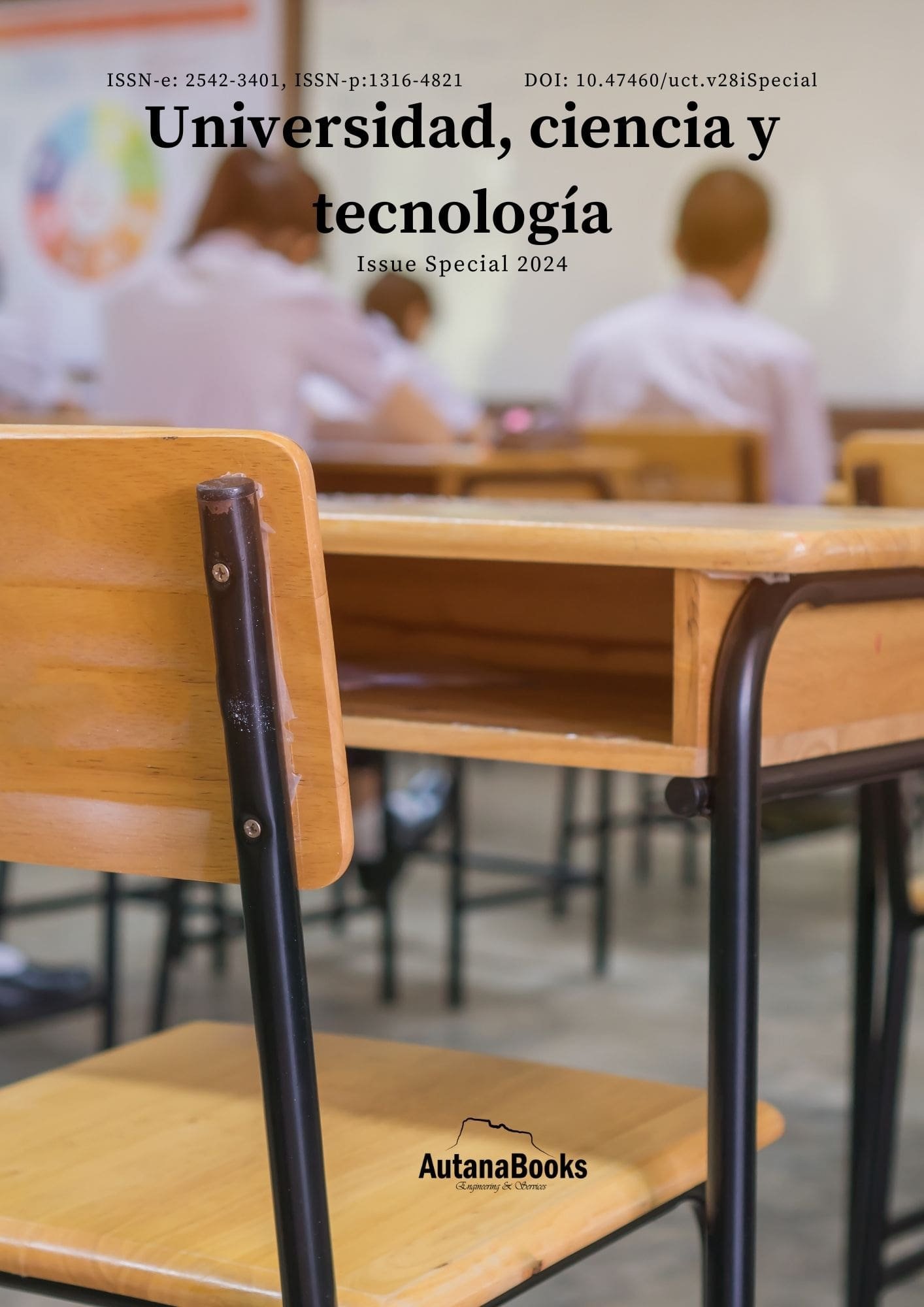Abstract
Solving math problems is one of the main challenges faced by students at all levels of education, for some, it is an exciting challenge, but for others, it can be a situation of great complexity and emotional stress. In this way, in this work the resolution of mathematical problems using heuristic strategies has been proposed, so that the student can face calculation situations with a general and broad vision, approaching the problem with multiple approaches and without getting stuck in the attempt to find a single solution. We worked with a group of 30 students so that it was possible to validate a contrast between the procedures used before and after the strategies. The main results show that heuristic strategies are a significant contribution to the visualization and resolution of mathematical problems, but they require their implementation and development permanently.
References
[2] NCTM, «National Council of Teachers of Mathematics.,» NCTM, 2019.
[3] R. Munaya y H. Retnawati, «Challenges of Mathematics Learning with Heuristic Strategies,» Al-Jabar: Jurnal Pendidikan Matematika, vol. 12, nº 1, pp. 161-173, 2021.
[4] UNESCO, «Global education monitoring report, 2020: Inclusion and education: all means all.,» International Commission on the Futures of Education., 2020.
[5] Y. Salazar, «¿Los estudiantes ecuatorianos saben matemáticas?,» Primicias, 21 Abril 2022.
[6] Lesh, R y Zawojewski, J.S., «Problem Solving and Modeling. In: Lester, F., Ed., Second Handbook of Research on Mathematics Teaching and Learning, Information Age Publishing, Greenwich,» Journal of Applied Sciences, vol. 7, nº 9, pp. 763-802, 2007.
[7] Penagos, M., Mariño, L. F. y Hernández, R. V., «Pensamiento matemático elemental y avanzado como actividad humana en permanente evolución. s, 2(1), 1.,» Revista Perspectivas, vol. 2, nº 1, pp. 105-116, 2017.
[8] Gaita, C. , Gonzales, C. , Ugarte, F. y Wilhlemi, M., «Resolución de problemas de regularidad, equivalencia y cambio. Desarrollo didáctico de la competencia.,» Pontificia Universidad Católica del Perú., 2022.
[9] Alamian, V. y Moghadam, M. K., «Investigating the Effect of Teaching Mathematics based on Bruner Theory on Eighth-Grade Male Students’ Misconceptions in Equation Solving,» Archives of Pharmacy Practice, vol. 1, nº 53, 2020.
[10] W. C. Rodríguez Arocho, «El legado de Vygotski y de Piaget la educación. Revista Latinoamericana de Psicología, 31(3), 9.,» vol. 31, nº 3, pp. 477-489, 1999.
[11] Z. Kohen y O. Nitzan, «Contextual Mathematical Modelling: Problem-Solving Characterization and Feasibility,» Education Sciences, p. 454, 2022.
[12] J. Medová, K. Bulková y S. Ceretková, «Relations between Generalization, Reasoning and Combinatorial Thinking in Solving Mathematical Open-Ended Problems within Mathematical Contest.,» Mathematics, vol. 8, nº 12, p. 2257, 2020.
[13] Fan, L. y Zhu, Y , «Representation of problem-solving procedures: A comparative look at China, Singapore, and US mathematics textbooks,» Educational studies in Mathematics, vol. 66, nº 1, pp. 61-75, 2007.
[14] J. Novotná, P. Eisenmann, J. Přibyl y J. Ondrušová, «Problem solving in school mathematics based on heuristic strategies,» Journal on Efficiency and Responsibility in Education and Science, vol. 7, nº 1, pp. 1-6, 2014.
[15] M. Karimi, M. Mohammadi, P. Meyer, A. Mohammad y T. Talbi, «Machine learning at the service of meta-heuristics for solvingcombinatorial optimization problems: A state-of-the-art,» European Journal of Operational Research, vol. 296, nº 2022, pp. 393-422, 2021.
[16] J. Palacios, A. Marchesi y C. Coll, Desarrollo psicológico y evolución. Psicología educativa., Madrid: Alianza Editorial, 2014.

This work is licensed under a Creative Commons Attribution 4.0 International License.


